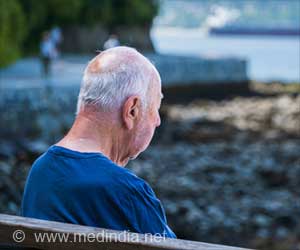Painless treatment for improving eyesight in old age could be on the anvil.
For the first time, it may soon be possible to improve or prevent failing eyesight in old age using a combination of simple and painless treatments.
The Vision Centre, Australia is reporting significant success in a major collaborative research program which seeks to protect and possibly restore functional vision using simple therapies based on light, diet and oxygen.These therapies include light management, anti-oxidant dietary supplements, healing of damaged eye cells using near-infra-red light and short-term oxygen therapy, and are all based on a deepening understanding of the cellular and genetic processes within the eye.
Recent research results in animal models show these therapies offer great promise for treating vision loss in conditions such as age-related macular degeneration (AMD – the most common cause of blindness in old age), age-related degeneration of the retina and retinitis pigmentosa which causes permanent blindness in much younger people (and affects about 5000 Australians).
All of the techniques work by manipulating the genetic responses in the eye’s vision cells in ways that improve their resilience, boost healing and reduce damage, says Professor Jonathan Stone of Sydney University and the Australian National University, and the ARC Centre of Excellence in Vision Science (The Vision Centre).
A Vision Centre team headed by Dr Krisztina Valter has produced world-first evidence that eyesight damage caused by exposure to very bright light can be repaired or even prevented using doses of near-infra-red light. “When an eye cell has been damaged by overexposure to light it usually dies from stress caused by free radicals – but when the cells are stimulated with IR light, they appear to recover significantly and to withstand future damage much better,” she says. The team plans to move to clinical trials shortly.
A second form of treatment is simply to restrict the amount of light entering the eye, using dark glasses or other means. “We have shown that restricting light in young eyes in animal models of retinal degeneration greatly reduces the amount of damage they sustain from ordinary bright daylight,” Dr Valter says. “In some forms of retinal degenerations, vision cells are particularly sensitive to light and become stressed or die from normally non-damaging intensity of light. We have shown that protecting these retinas from light from birth can slow the degeneration. Now we are addressing the question if it is worth limiting light exposure later in life even if the eyes were unprotected during childhood. And the answer, so far, appears to be yes, it definitely is. Sunglasses are as important for protecting children as well as young adults from the full sun as a shirt or hat.”
Advertisement
In a third development at the Vision Centre, Professor Silvia Bisti of the University of L’Aquila in Italy has discovered that a dietary supplement of the herb saffron offers potentially major benefits for protecting and repairing damaged vision. Saffron appears to work not only as an anti-oxidant but also to regulate genes in the vision cells of the eye which can improve their resilience and possibly slow down diseases such as retinititis pigmentosa and age-related macular degeneration (AMD). “We have some encouraging results which suggest it may be possible to reverse the damage of AMD – but it is very early in the research and we will know more later this year,” she says.
Advertisement
Prof. Stone says that the combination of several of these mild treatments may for the first time offer a way to restore or prevent failing eyesight in age. “They are all easy and painless to administer, especially the light restriction and dietary approaches which can be applied all through life. We’ve learned to take care of our teeth so we still have them in old age – now it’s time to do the same for our vision.”
Source-Medindia
GPL/L







